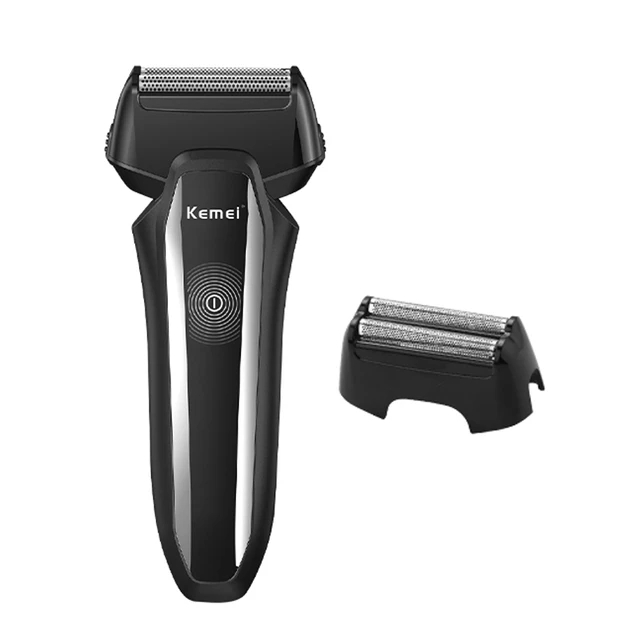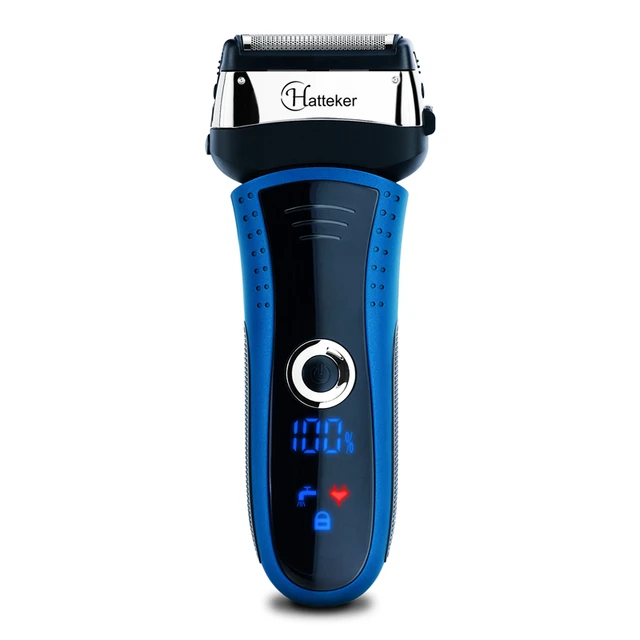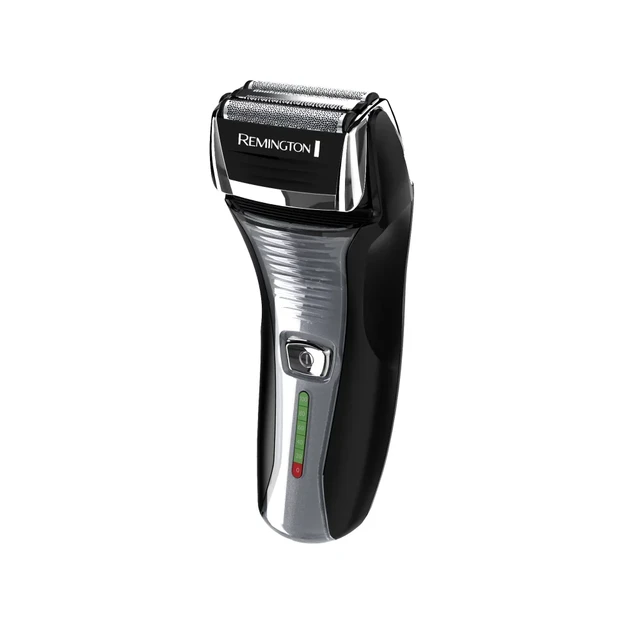Introduction:
The choice between an electric shaver and a razor is a personal one, based on individual preferences, skin type, and grooming routine. Both options have their advantages and disadvantages, and what works best for one person may not suit another. In this guide, we will explore the benefits and drawbacks of electric shavers and razors, covering various factors such as convenience, closeness of shave, skin sensitivity, cost, and maintenance. By understanding the pros and cons of each option, you can make an informed decision and choose the method that best fits your needs.

Is electric shaver better than razor?
Convenience and Time:
Electric Shavers: Electric shavers offer convenience and time-saving benefits. They can be used anywhere, without the need for water, shaving cream, or additional accessories. Electric shavers are ideal for individuals with busy lifestyles or those who prefer a quick and hassle-free shaving experience. They can be used on dry skin, allowing for on-the-go grooming with minimal preparation.
Razors: Using a razor requires more preparation time and access to water, shaving cream, or gel. It may be more suitable for individuals who enjoy a traditional grooming routine or have more time available. Razors are often used in combination with other skincare products and can provide a more luxurious and indulgent shaving experience, particularly with warm water and high-quality shaving creams.
Closeness of Shave:
Electric Shavers: While electric shavers have significantly improved over the years, they may not provide the same level of closeness as traditional razors. The cutting mechanisms of electric shavers, such as rotary or foil blades, may not be able to shave as closely as a sharp, single-blade razor. However, modern electric shavers are designed to provide a close enough shave for most individuals, especially for daily grooming needs.
Razors: Razors, particularly those with a single blade, allow for precise and close shaving. The sharpness of the blade allows for a smooth glide across the skin, capturing and removing hair at the root. This can result in a closer shave, especially in areas with dense or stubborn hair growth. However, using multiple-blade cartridge razors may lead to a closer shave but can also increase the risk of skin irritation or ingrown hairs.

Skin Sensitivity:
Electric Shavers: Electric shavers are generally considered more suitable for individuals with sensitive skin. They tend to cause less irritation, redness, or razor burn compared to manual razors. The cutting mechanisms of electric shavers, such as rotary or foil blades, are designed to minimize direct contact with the skin, reducing the likelihood of nicks or cuts. Some electric shavers also come with features like skin guards or adjustable settings to cater to different skin types.
Razors: Using a manual razor can be challenging for individuals with sensitive skin or prone to razor burn. The sharp blades can sometimes cause irritation, redness, or sensitivity, especially if not used with proper shaving techniques or quality shaving creams. However, using a sharp, single-blade razor with proper shaving direction and technique can minimize these issues.
Cost:
Electric Shavers: Electric shavers are generally more expensive upfront compared to disposable razors. The initial investment can be higher, especially for high-end electric shavers with advanced features and technology. However, over time, electric shavers may prove to be more cost-effective. They eliminate the need for purchasing replacement blades or cartridges regularly, reducing ongoing expenses. Additionally, electric shavers tend to have a longer lifespan, further adding to their cost-effectiveness.
Razors: Disposable razors or cartridge razors are typically more affordable initially. However, ongoing costs can accumulate due to the need for regular replacement blades or cartridges. The cost of replacement blades can vary, depending on the brand and quality. Higher-quality blades may provide a better shaving experience but can be more expensive in the long run.

Maintenance and Durability:
Electric Shavers: Electric shavers require regular maintenance to ensure optimal performance and longevity. Cleaning the shaving heads, replacing blades or foils, and lubricating the cutting elements may be necessary. Some electric shavers come with self-cleaning features, which simplify maintenance but can require additional expenses for cleaning solutions. The overall durability of electric shavers is typically good, with many models designed to withstand regular use and provide long-lasting performance.
Razors: Razors, especially disposable ones, are generally low-maintenance. After use, disposable razors can be discarded, eliminating the need for cleaning or blade replacement. Cartridge razors require occasional cartridge replacement, usually when the blades become dull. Razors can be more susceptible to wear and tear, particularly if not handled carefully, and may need to be replaced more frequently compared to electric shavers.
Personal Preference:
Ultimately, the choice between an electric shaver and a razor comes down to personal preference. Some individuals may prefer the efficiency and convenience of electric shavers, while others enjoy the traditional feel and ritual of using a razor. It is important to consider factors such as comfort, shaving goals, skin type, and individual grooming habits when making a decision. Trying both options and experimenting with different techniques can help determine which method provides the desired results.

Versatility:
Electric Shavers: Electric shavers are versatile and can be used for various shaving needs. They are suitable for both dry and wet shaving. Dry shaving is convenient for quick touch-ups or situations where water and shaving cream are not readily available. Some electric shavers are also waterproof and can be used in the shower or with shaving gel or foam, offering a more luxurious and comfortable shaving experience.
Razors: Razors, particularly cartridge razors, are primarily designed for wet shaving. They are commonly used in combination with warm water and shaving creams or gels. This combination helps soften the hair and moisturize the skin, resulting in a smoother and more comfortable shave. Wet shaving can be a relaxing and indulgent routine for individuals who enjoy a more meticulous grooming experience.
Precision and Detail:
Electric Shavers: Electric shavers are generally efficient for quick and broad strokes, making them suitable for shaving larger areas of the face or body. However, when it comes to precise detailing or shaping facial hair, such as sideburns or mustaches, electric shavers may not offer the same level of precision as razors. The design and cutting mechanisms of electric shavers make them more effective for general shaving rather than intricate styling.
Razors: Razors, particularly those with single blades, provide greater precision and control for shaping facial hair or achieving specific styles. The sharpness and narrowness of the blade allow for detailed and accurate grooming. This makes razors a preferred choice for individuals who require precise outlining or who want to maintain specific facial hair styles.
Learning Curve:
Electric Shavers: Using an electric shaver typically has a shorter learning curve compared to manual razors. Electric shavers are designed to be user-friendly, with intuitive controls and mechanisms. They require minimal technique and can be maneuvered easily across the skin. This makes electric shavers a suitable option for individuals who are new to shaving or prefer a simpler grooming routine.
Razors: Shaving with a manual razor can have a steeper learning curve, especially for individuals who are new to traditional shaving methods. Achieving a close and smooth shave with a razor requires proper technique, correct blade angle, and attention to shaving direction. It may take some time and practice to master these skills and achieve the desired results. However, once the technique is learned, using a manual razor can provide a satisfying and traditional shaving experience.

Conclusion:
Choosing between an electric shaver and a razor depends on personal preferences, shaving goals, skin sensitivity, and grooming routines. Electric shavers offer convenience, quick usage, and are generally more suitable for individuals with sensitive skin. They may not provide the same level of closeness as traditional razors but offer a close enough shave for most people. Razors, on the other hand, provide a closer shave and a more traditional grooming experience but require more time and preparation.
Electric shavers are initially more expensive but can be cost-effective in the long run due to reduced ongoing costs. Maintenance requirements and durability vary between electric shavers and razors, with each requiring different levels of attention. Ultimately, the choice depends on personal preference and individual factors. It may be helpful to try both options and consider factors such as convenience, closeness of shave, skin sensitivity, cost, and maintenance to make an informed decision that suits your needs and preferences.


